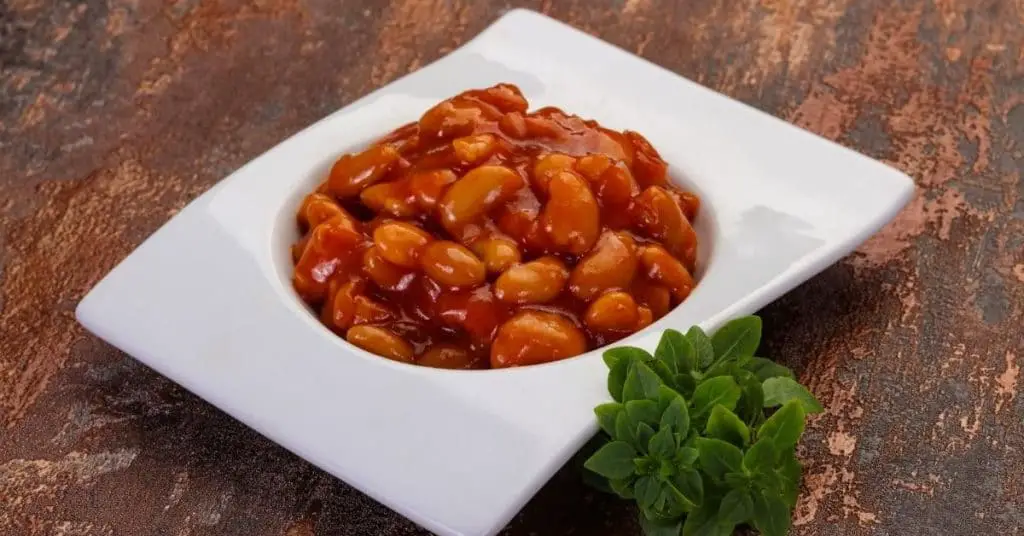In brief: Yes, you can freeze baked beans. Whether homemade or canned, baked beans can be frozen to extend their shelf life and preserve their flavor and texture. Just make sure to follow the proper steps for freezing and packaging.
Hearty, flavorful, and richly filling, baked beans make for a popular low-cost meal or side dish. Whether homemade beans or canned beans, this protein-rich dish is laden with sauce, providing loads of flavor.
Baked beans aren’t exactly the type of leftovers you’ll pop into your lunchbox the next day, or reach for as a midnight snack. So what do you do with leftovers to prevent them from going to waste? Luckily baked beans freeze well, and this provides the perfect solution to extend their shelf life for long-term preservation.
Here is what you need to know before freezing baked beans.
Can Baked Beans Be Frozen?
Leftover beans freeze very well retaining their flavor and a good texture. When freezing homemade baked beans it is best to freeze them the same day they were made for the best preservation of freshness and flavor.
If you know prior to cooking that you are planning to freeze the baked bean dish, you may opt for slightly undercooking the recipe and leaving the beans just a little firm. This way, the beans will turn out perfectly when thawed, heated the second time around for eating, and will not become mushy.
Canned baked beans can also be frozen, however, they should never be frozen in the can, whether opened or not. Always decant canned baked beans into a freezer-friendly air tight container or freezer bag. Unopened cans do however have a long shelf life. Follow the steps below as you would for freezing home-baked beans.
How To Freeze Baked Beans
Step 1: Cool
Cooked baked beans should always be completely cooled before placing them in the freezer. The sudden temperature changes could cause the beans to burst open or the container to crack. It could also result in poor texture and taste due to the condensation of steam causing excessive water crystallization.
Let the beans cool to room temperature or place them in the refrigerator for a few hours before preparing to freeze.
Step 2: Portion and Pack
Baked beans can be stored either in airtight containers or a freezable bag. Freezing the baked beans in resealable freezer bags allows you to conserve space in the freezer and also to divide the beans into any portion size that may best suit your needs for future meals.
If you are going to freeze baked beans with meat, place the meat in the bag or freezer safe container and cover it with the beans.
Alternatively, just portion the baked beans into your chosen freezer container. Make sure to leave an inch of head space allowing some expansion of the beans and sauce on freezing without causing the freezer bag or plastic container to burst open.
Step 3: Extra Sauce
To avoid freezer burn, cover your baked beans in a little extra sauce when freezing. Not only does this keep them from becoming dry but it also makes it easier to reheat the beans and retain the saucy flavors.
Step 4: Seal and Label
Remove any air from freezer bags before sealing. Label your bags or freezer safe containers with the date of freezing so you can keep track of how long they have been stored. Place the beans in the freezer.
How To Thaw Frozen Baked Beans
For the best results, slowly thaw baked beans overnight in the fridge. Keep the frozen beans in the container and simply transfer from the freezer to the refrigerator. Once thawed, you can reheat baked beans on the stovetop in a saucepan over low heat.
If you are short on time, your second option for reheating baked beans is to heat them on the stovetop from frozen. Thawing in the refrigerator is however always the best choice.
Run the sealed freezer bag under water to release the frozen edges and decant the frozen mixture into a saucepan. Add a small amount of water (1/4 cup to 1 cup depending on the portion size) to the saucepan to assist with even heat distribution and avoid burning your meal during the reheating process.
Types of Baked Beans
Baked beans is a dish generally made with white beans. When commercially-canned, haricot beans, also known as navy beans, are used as well as kidney beans.
Dried beans are parboiled and then either baked or stewed in a sauce at a low temperature for a long period until tender. Canned baked beans are not baked, but are cooked by a steaming process.
Beans on their own can be fairly bland. Correctly prepared, the lengthy stewing or baking process allows the beans to absorb flavors from the sauce for a hearty and comforting meal.
The secret to a fabulous homemade baked bean dish is to find a sauce that appeals to your taste buds and make it exactly the way you like it. Add spices, vegetables, meat, stock, and herbs according to your preferred recipe.
Canned baked beans are made with a sweetening agent such as brown sugar, and a tomato-based sauce. Sometimes onions, ham, bacon, or mustard are also added. The tough exterior of beans allows them to stand up to the lengthy cooking process and to handle reheating and freezing well.
FAQs
Conclusion
A great budget friendly addition to any meal of the day, baked beans can be made to suit your taste with a sauce you love. This filling, protein-rich meal is fantastic to have on hand in the freezer when there is no time for cooking.
Always freeze beans as fresh as possible to ensure the quality is good on thawing. Baked beans of poor quality before freezing will not be any better once thawed and reheated.
For a real money and time saver, buy in bulk, cook up a baked-bean storm, and freeze your healthy ready-made meal portions for delicious food on demand. Saucy, spicy, comforting, and yummy.
Image by depositphotos/AndreySt









